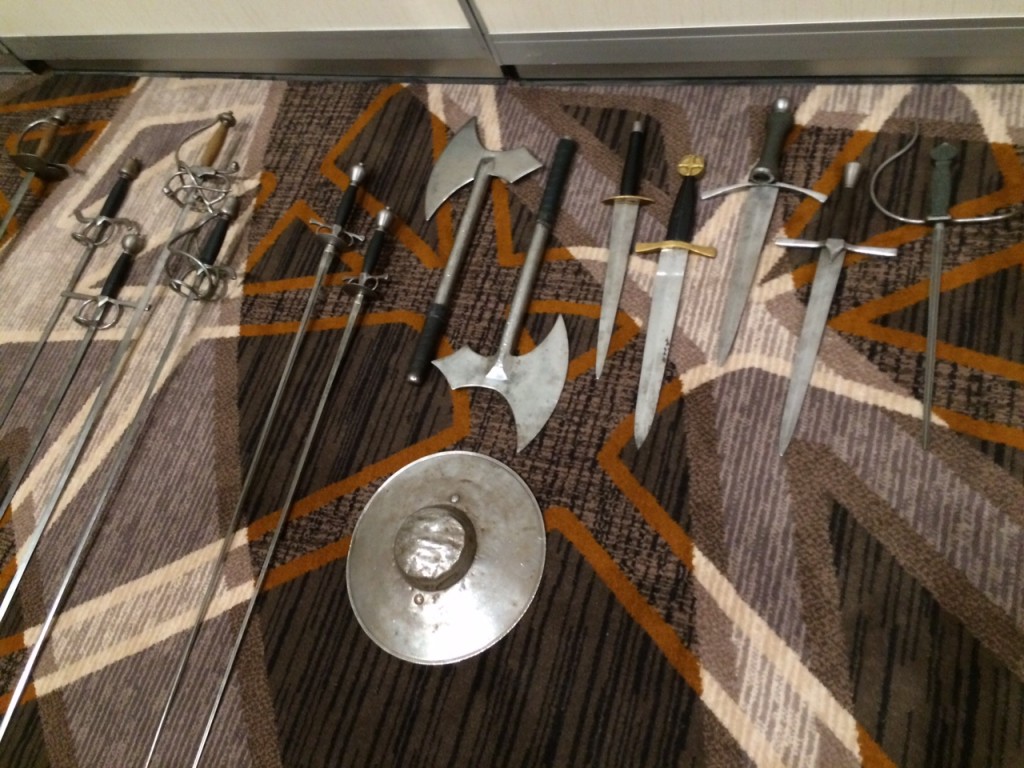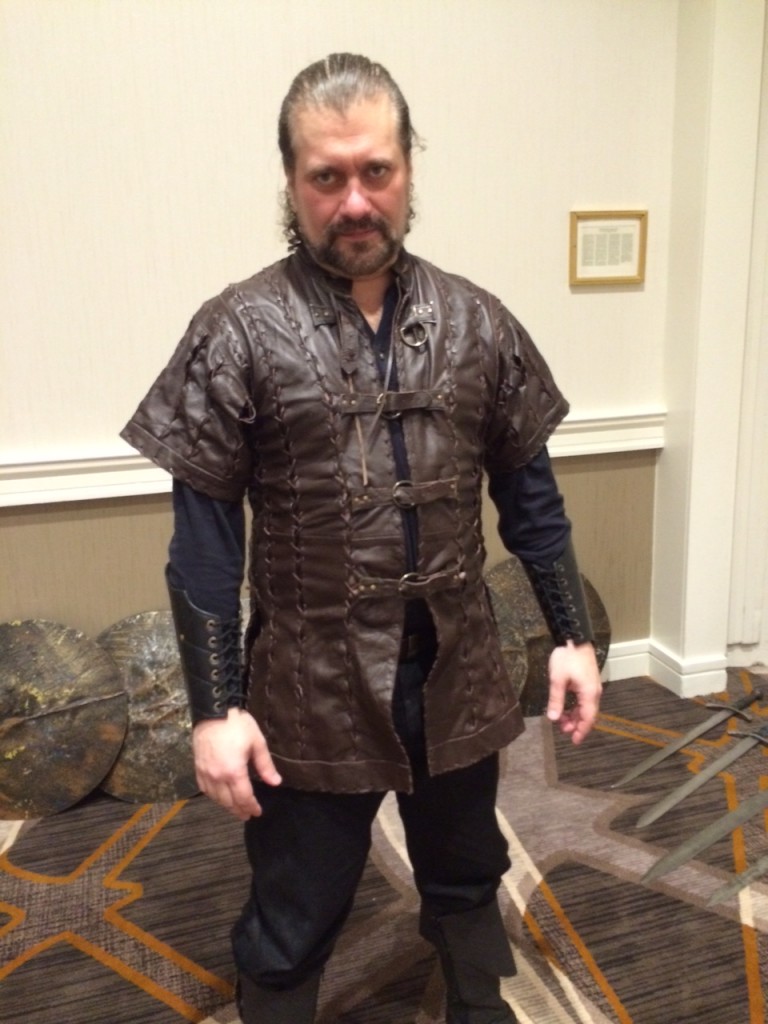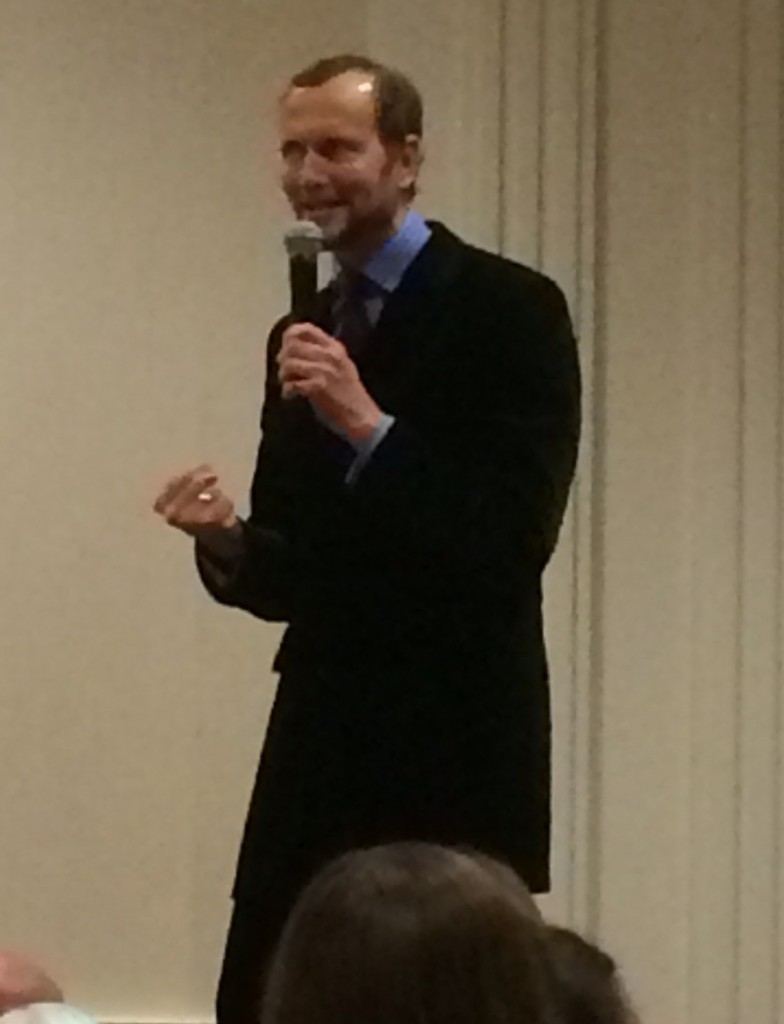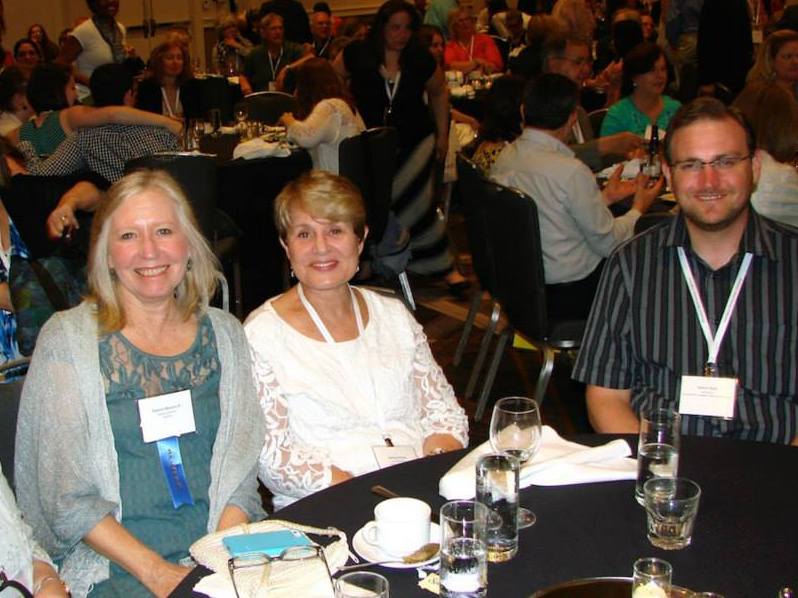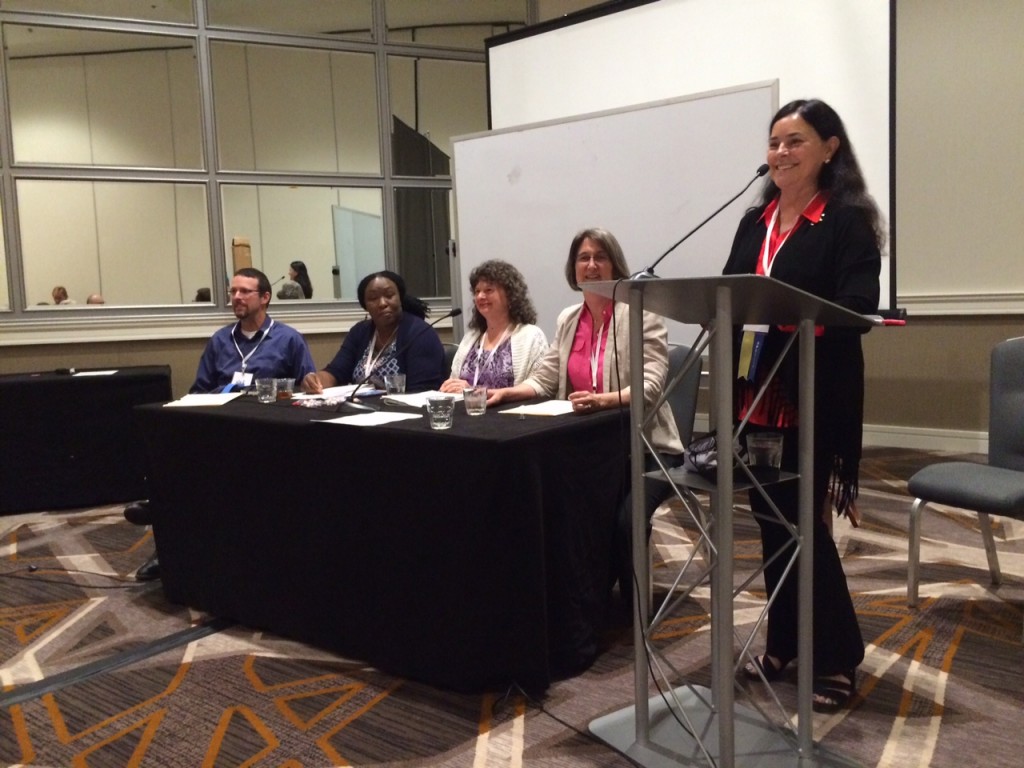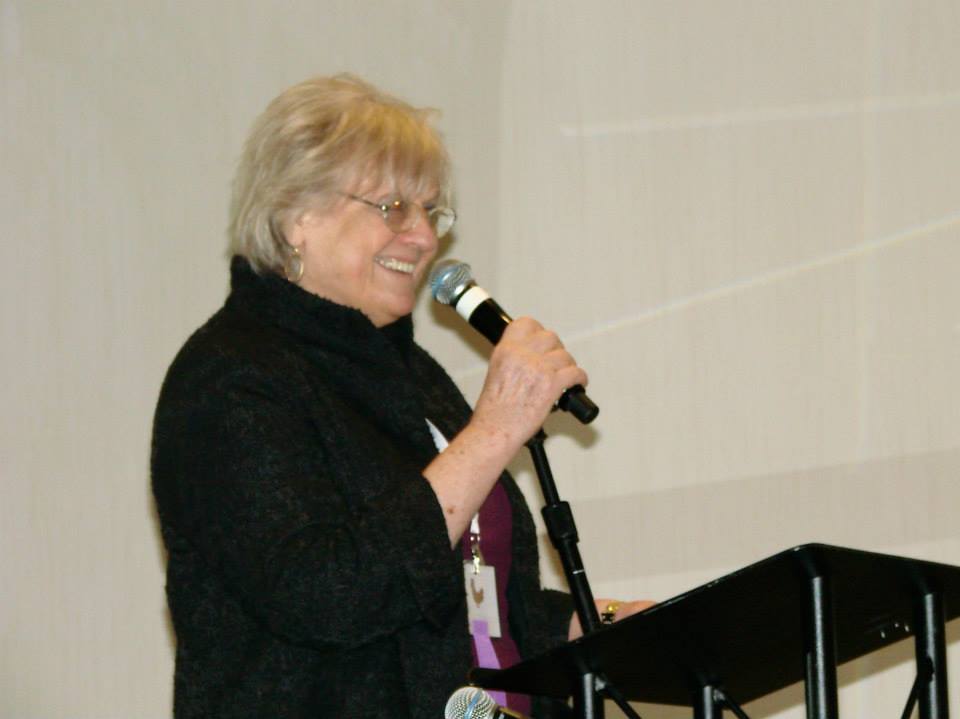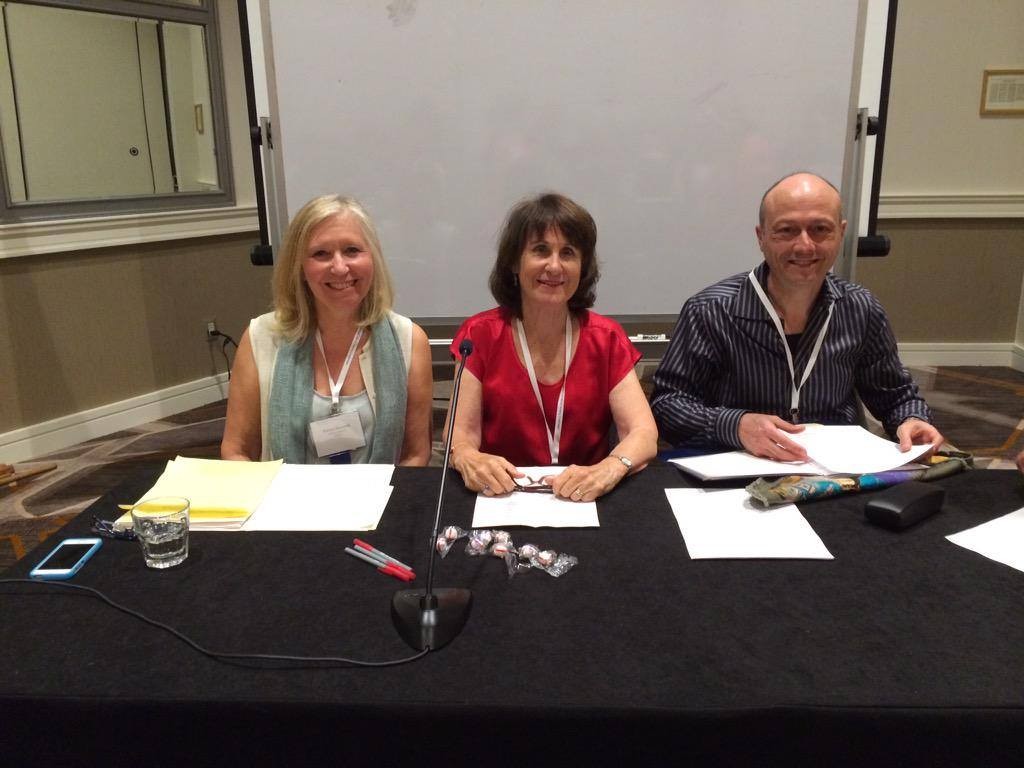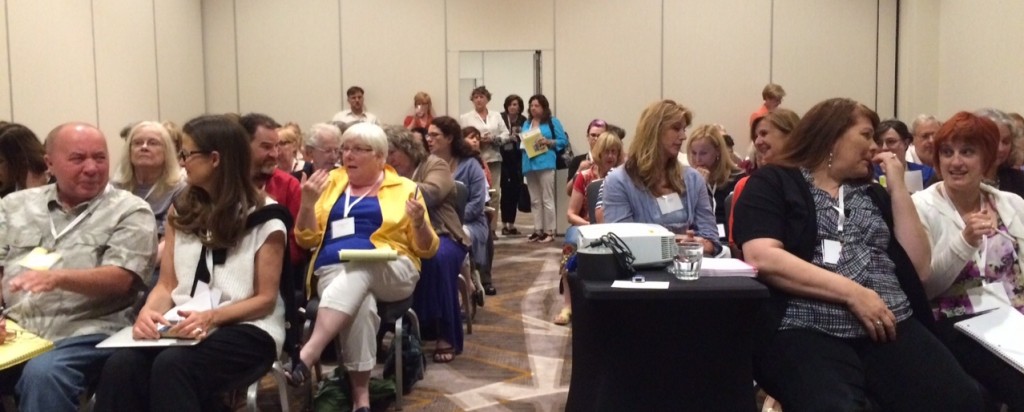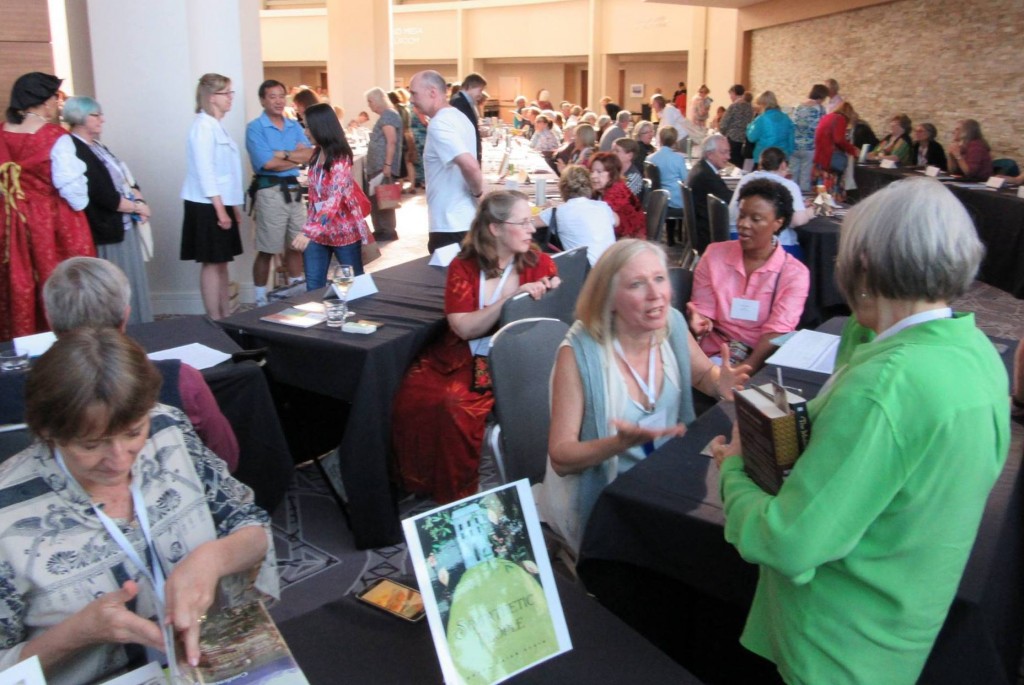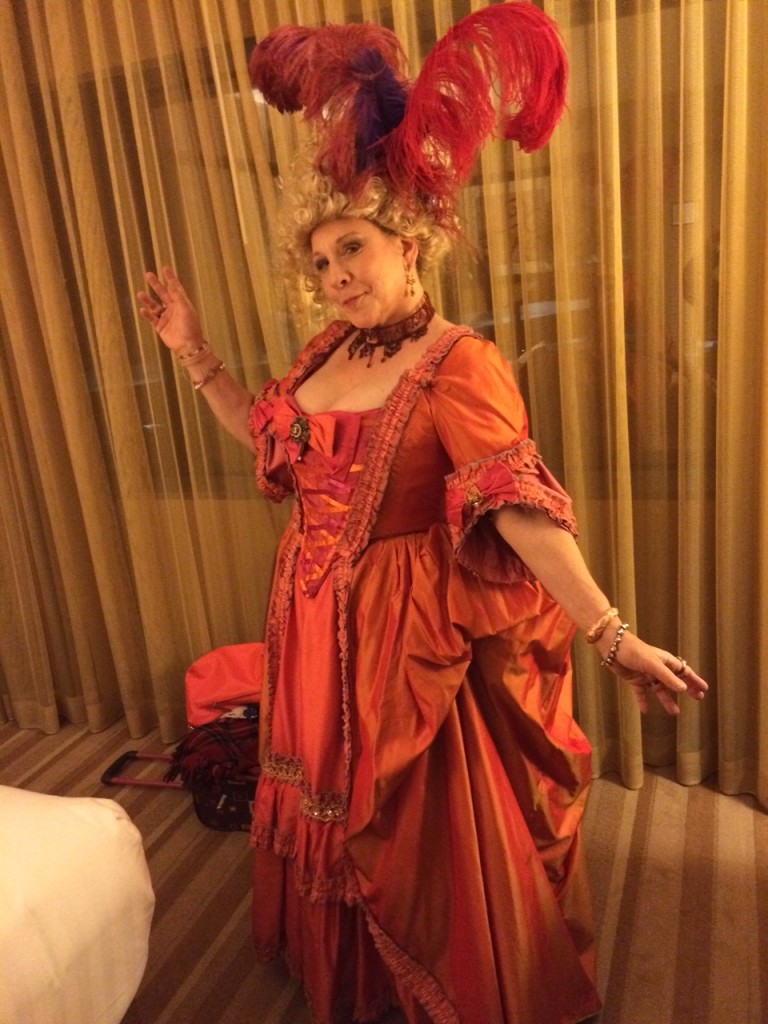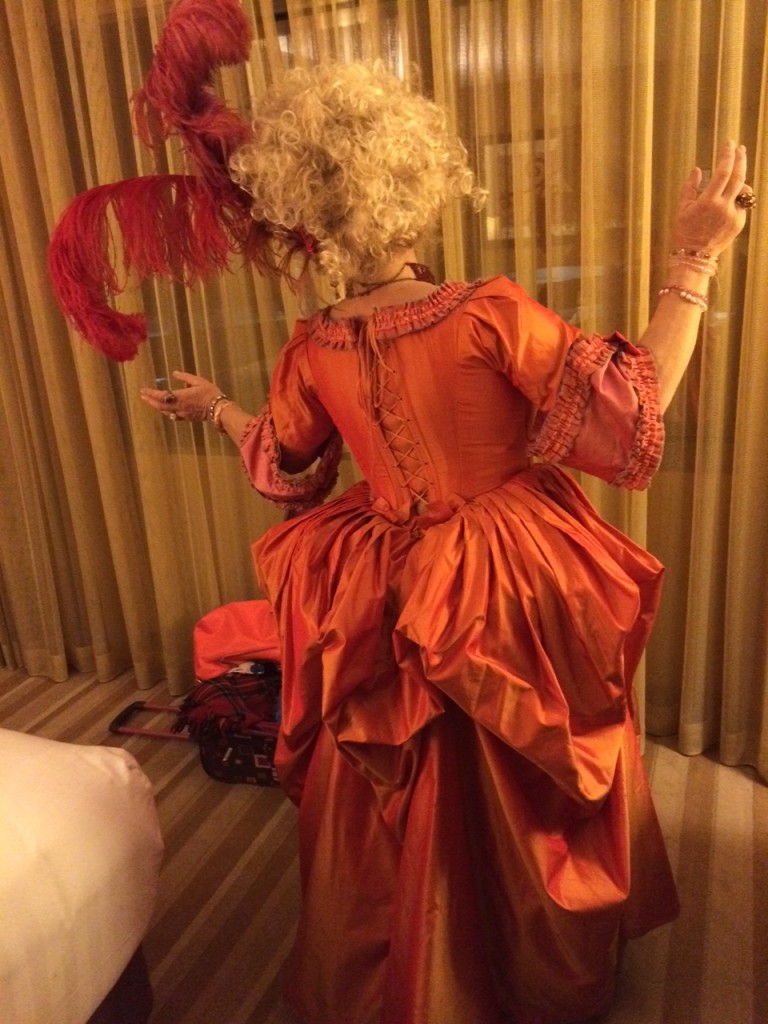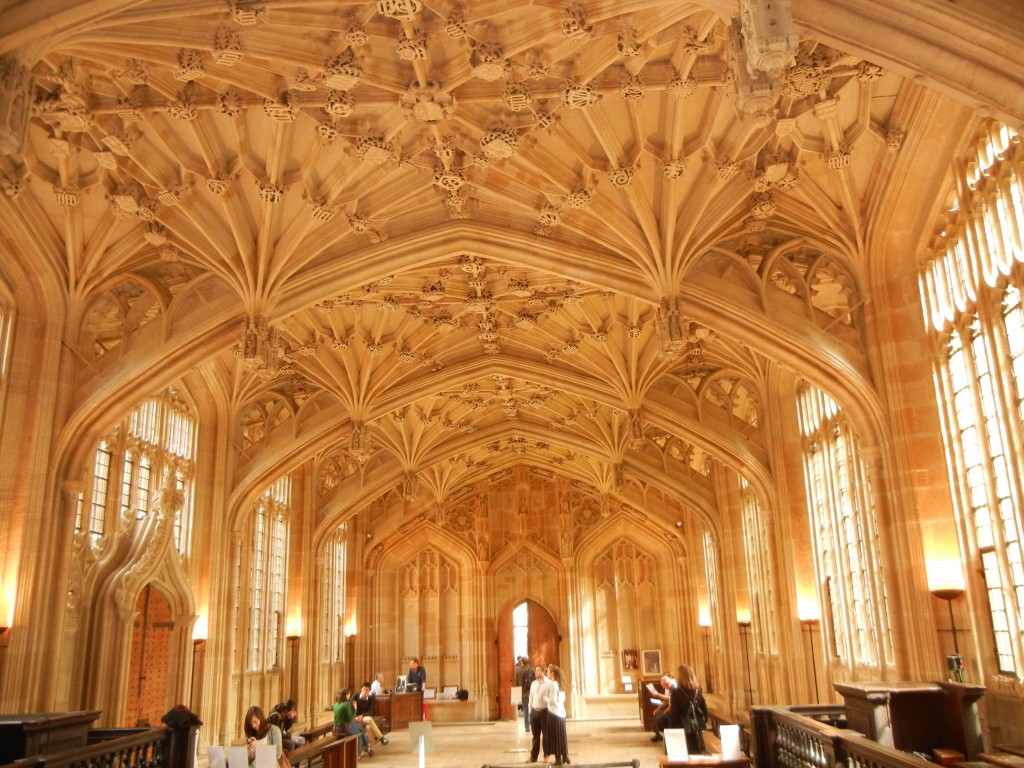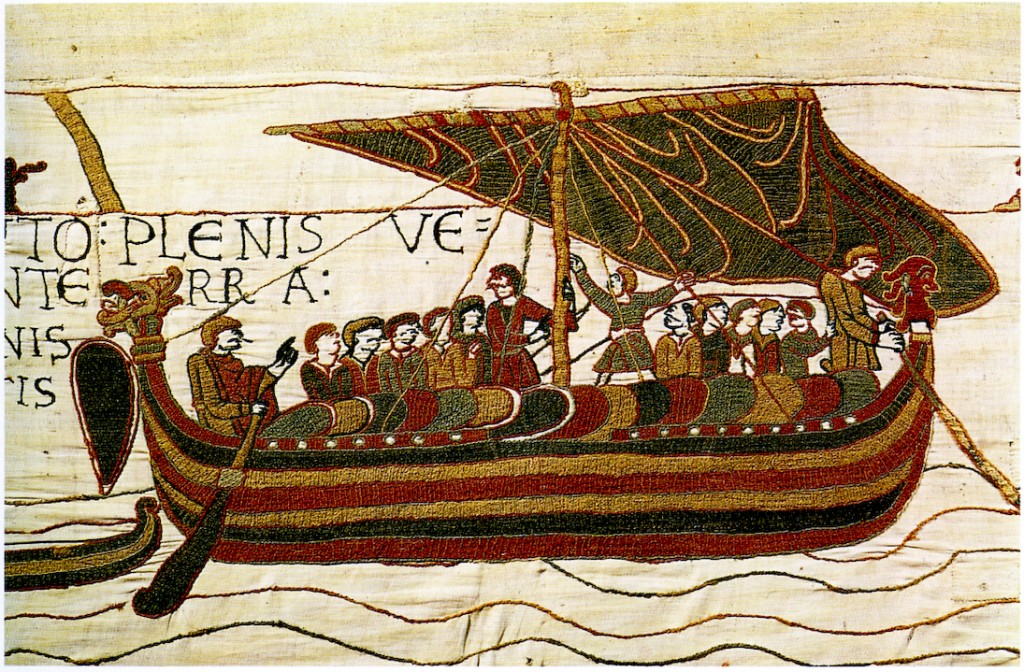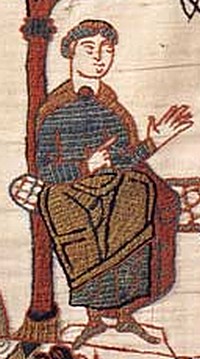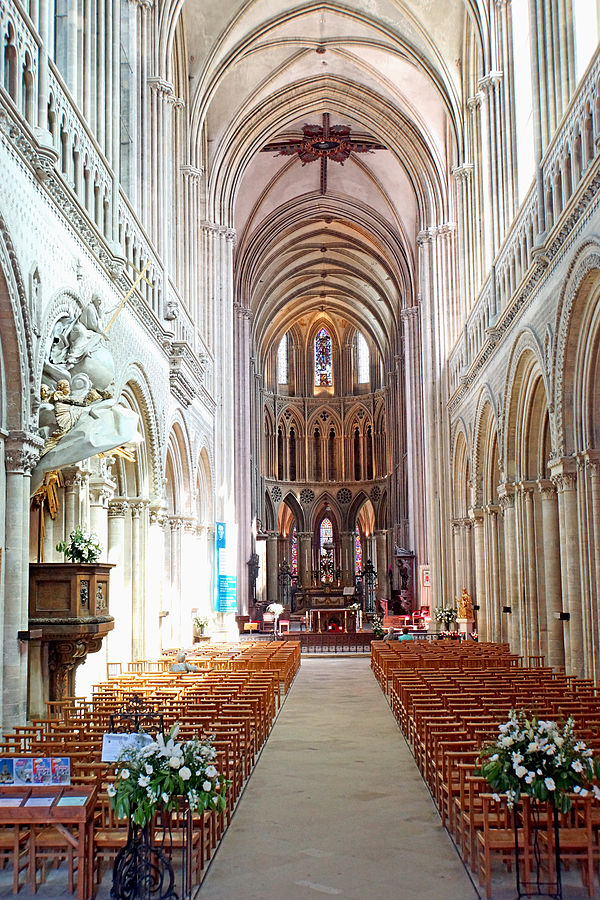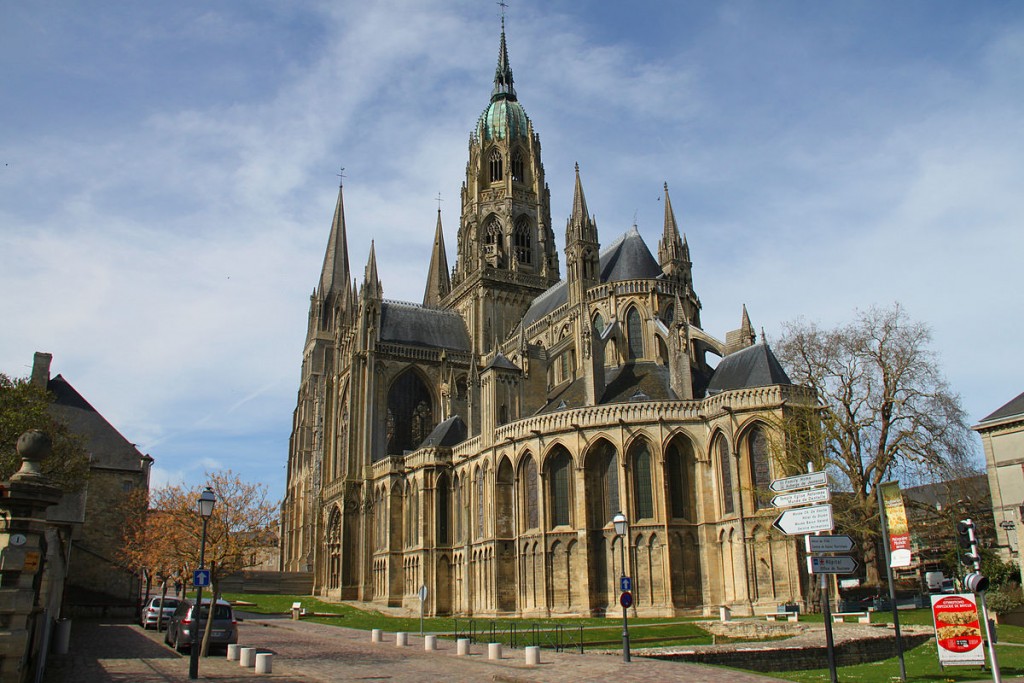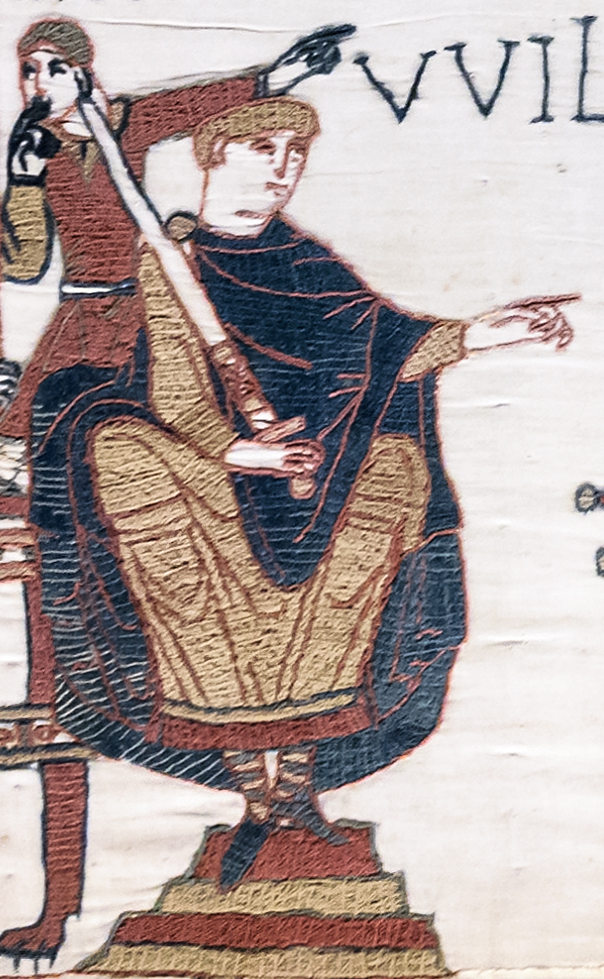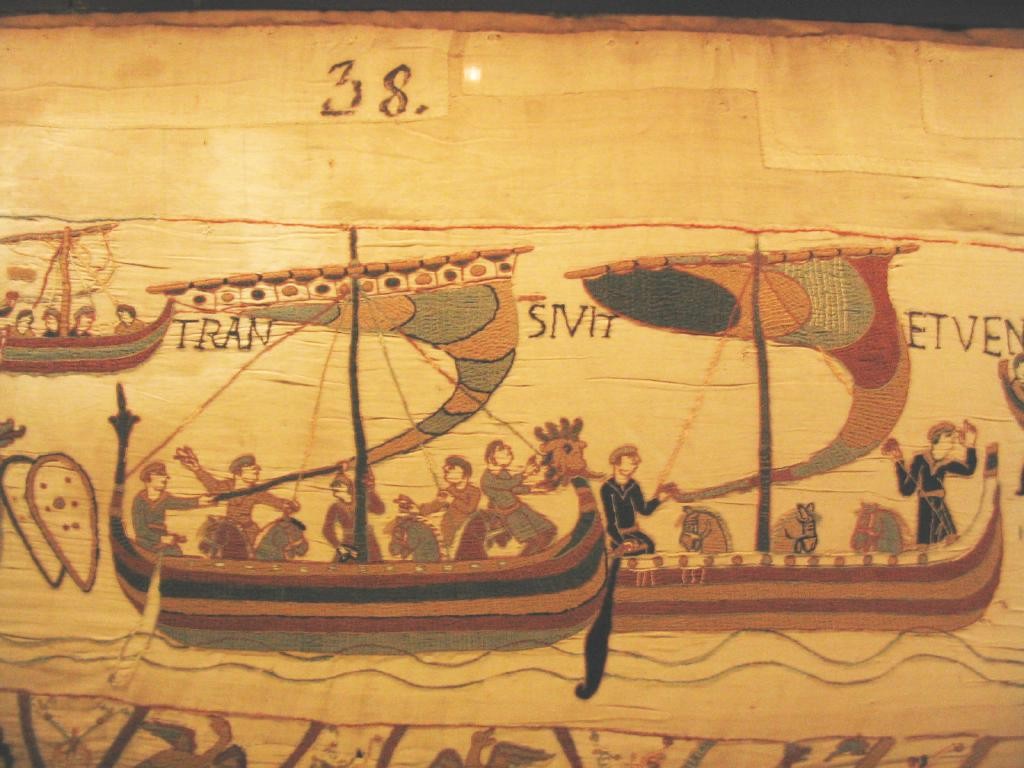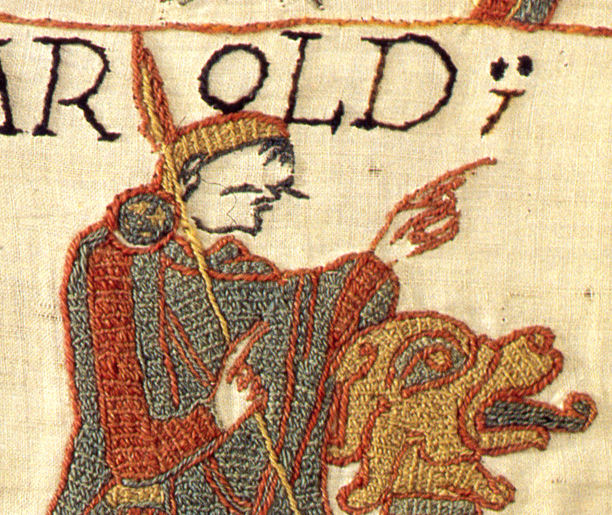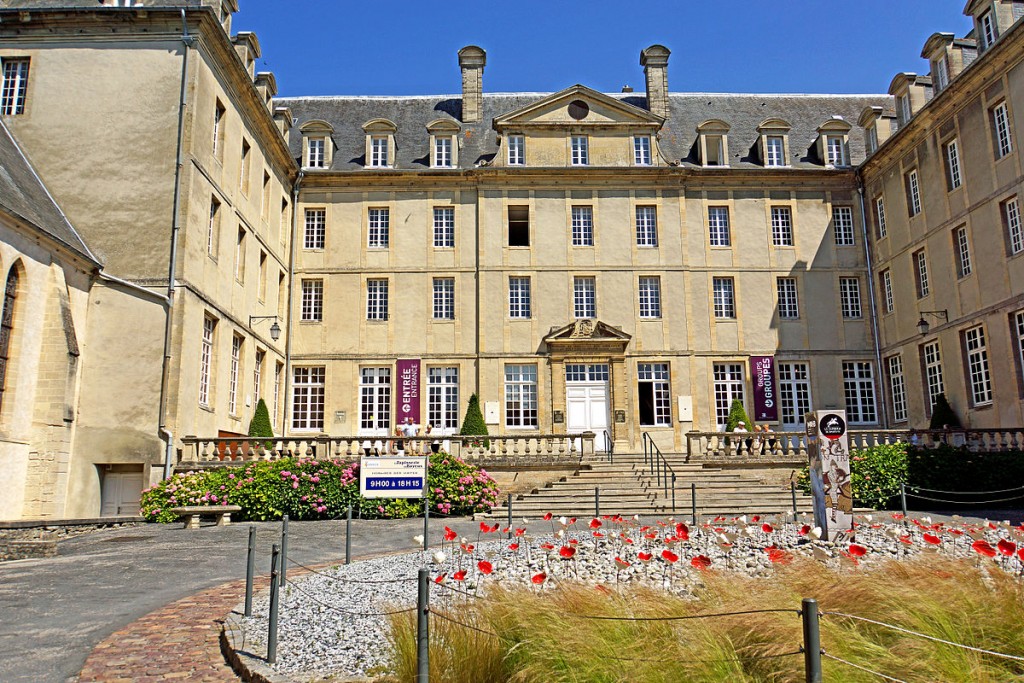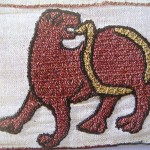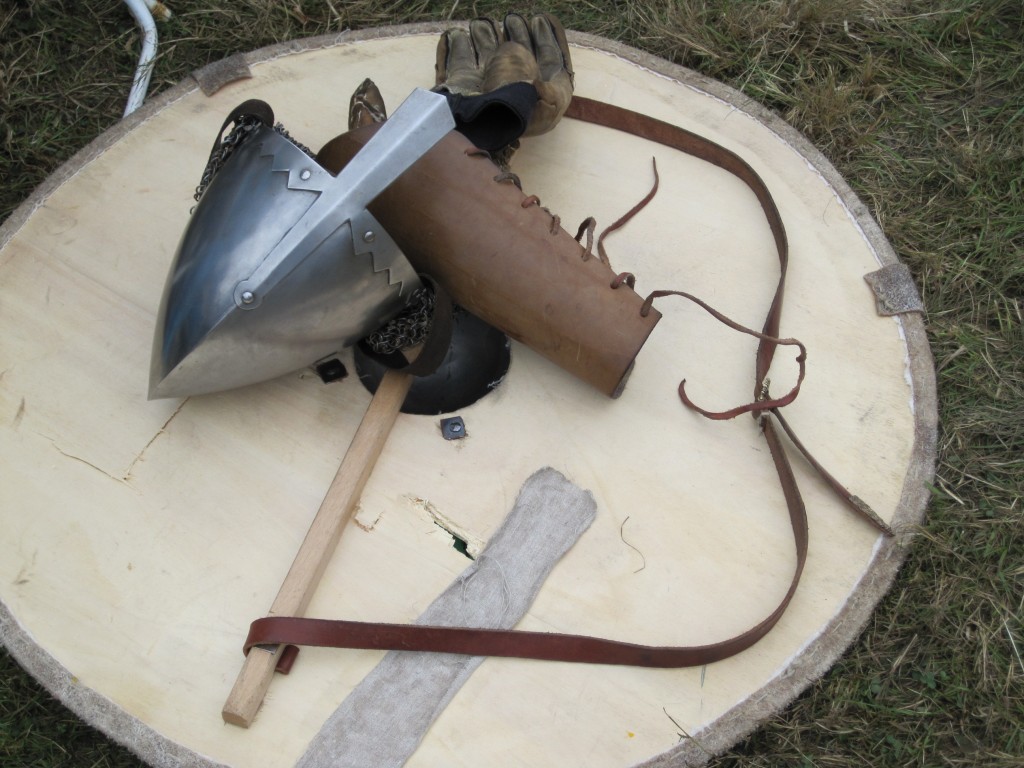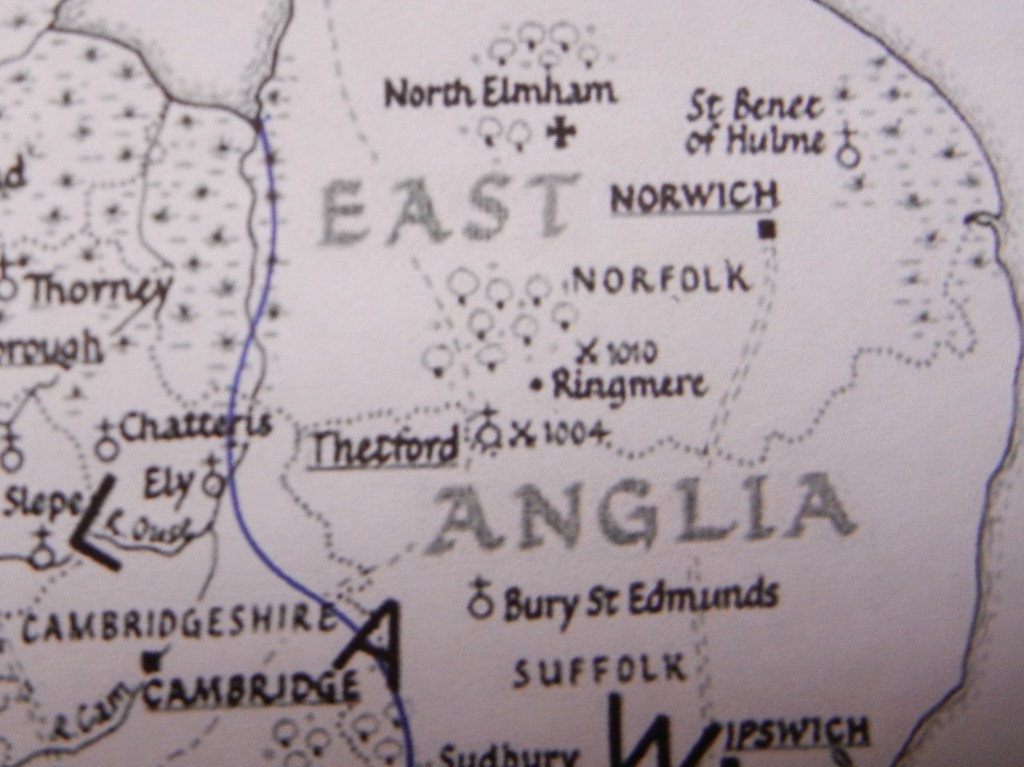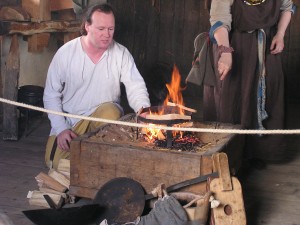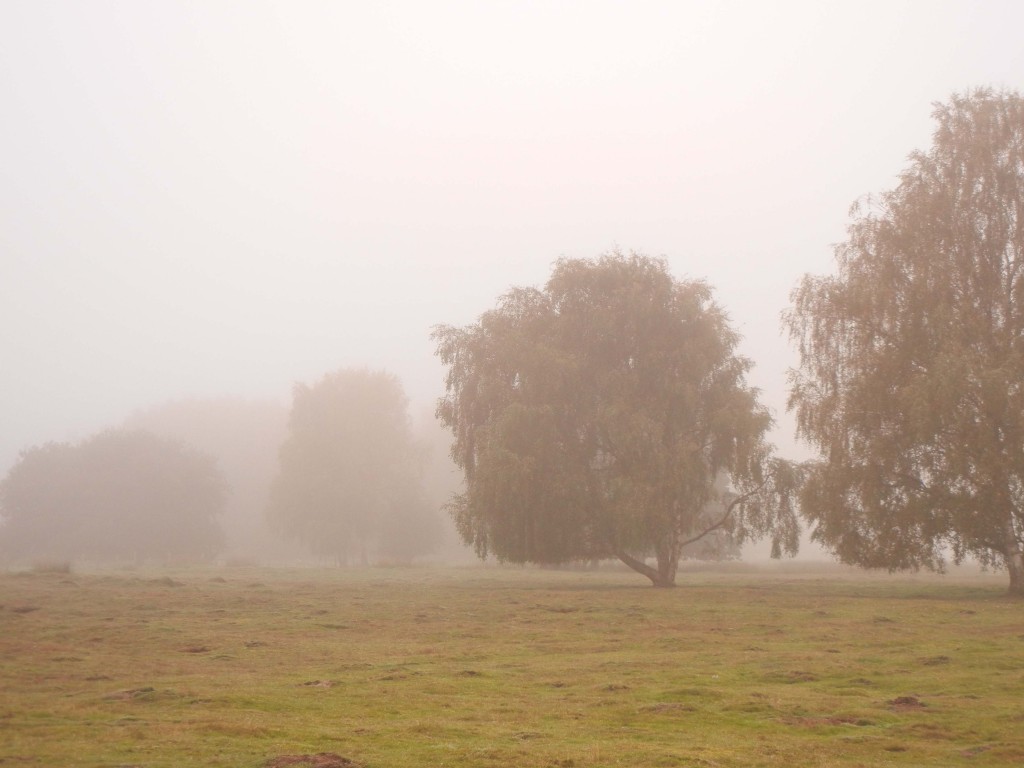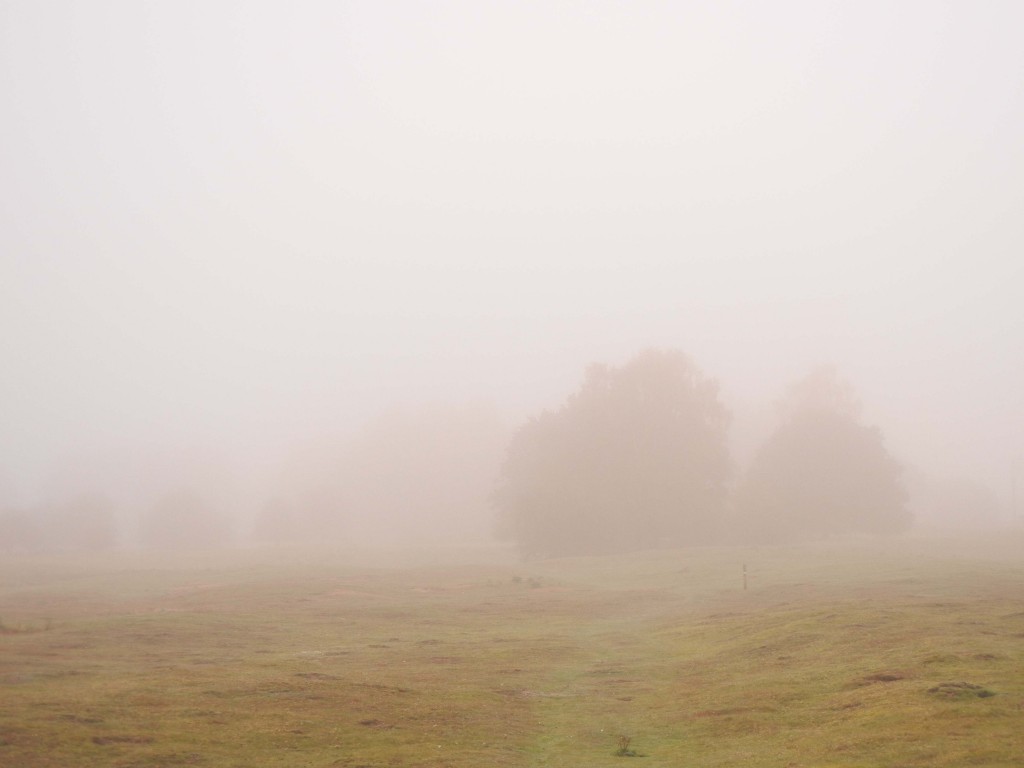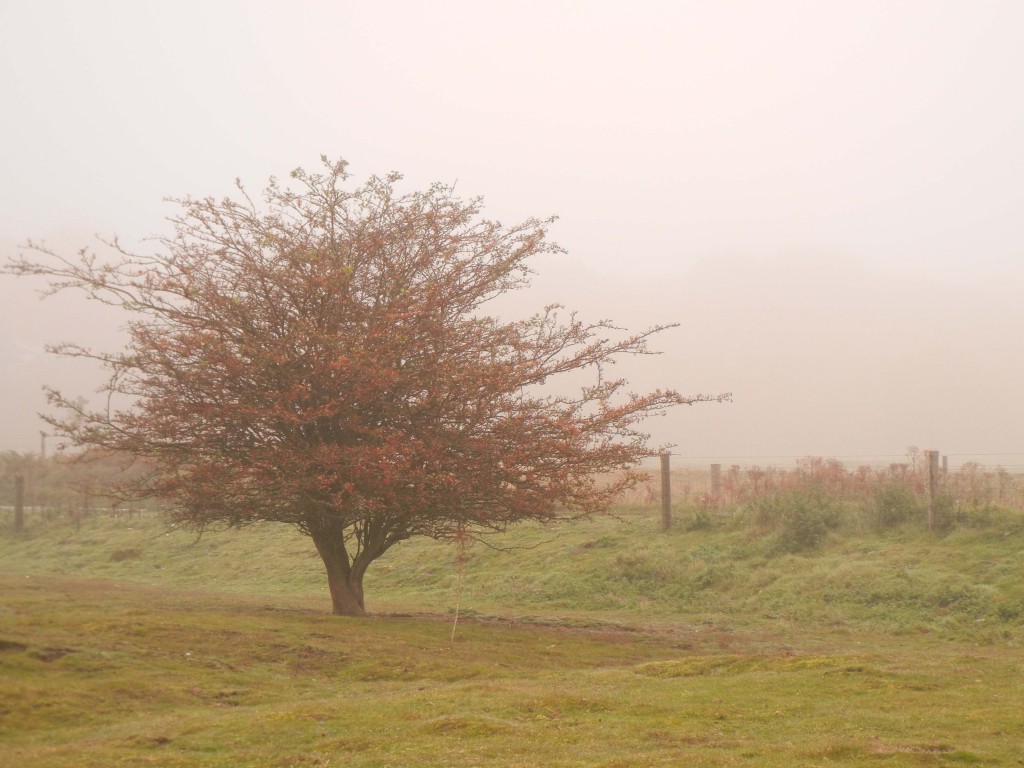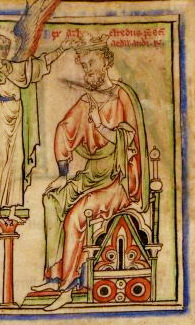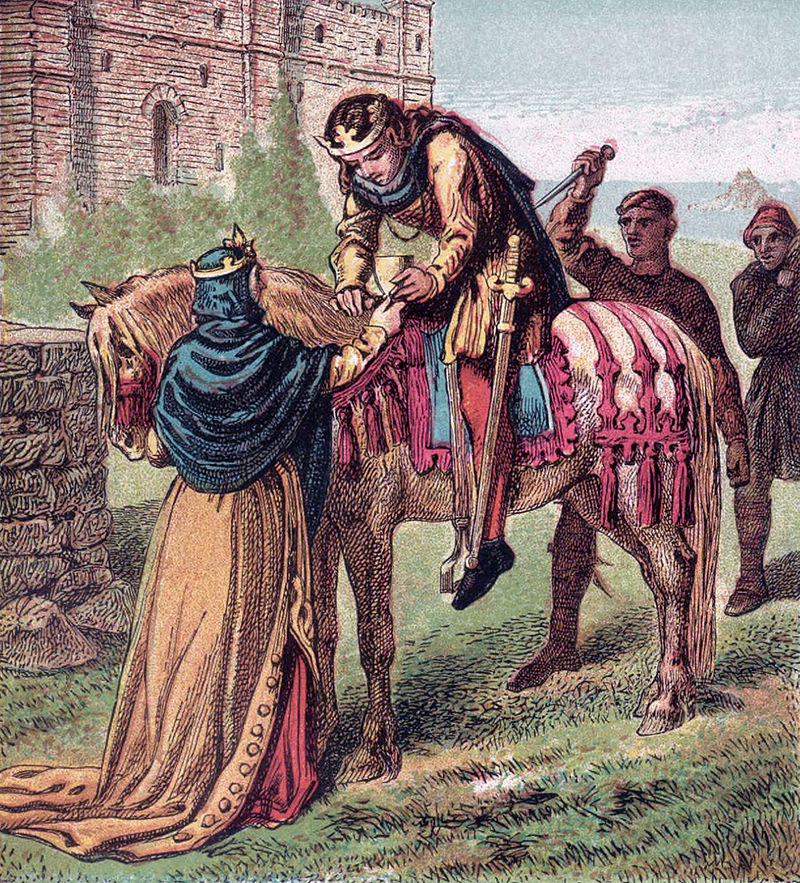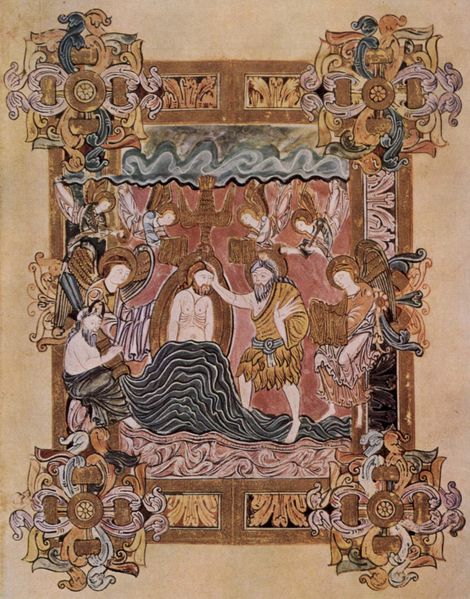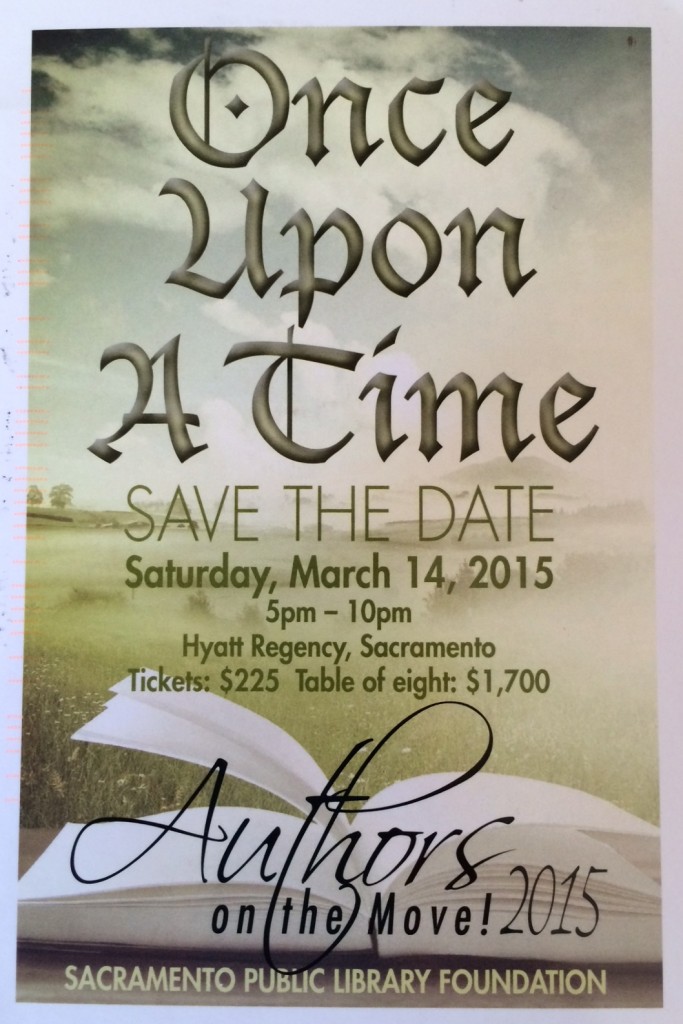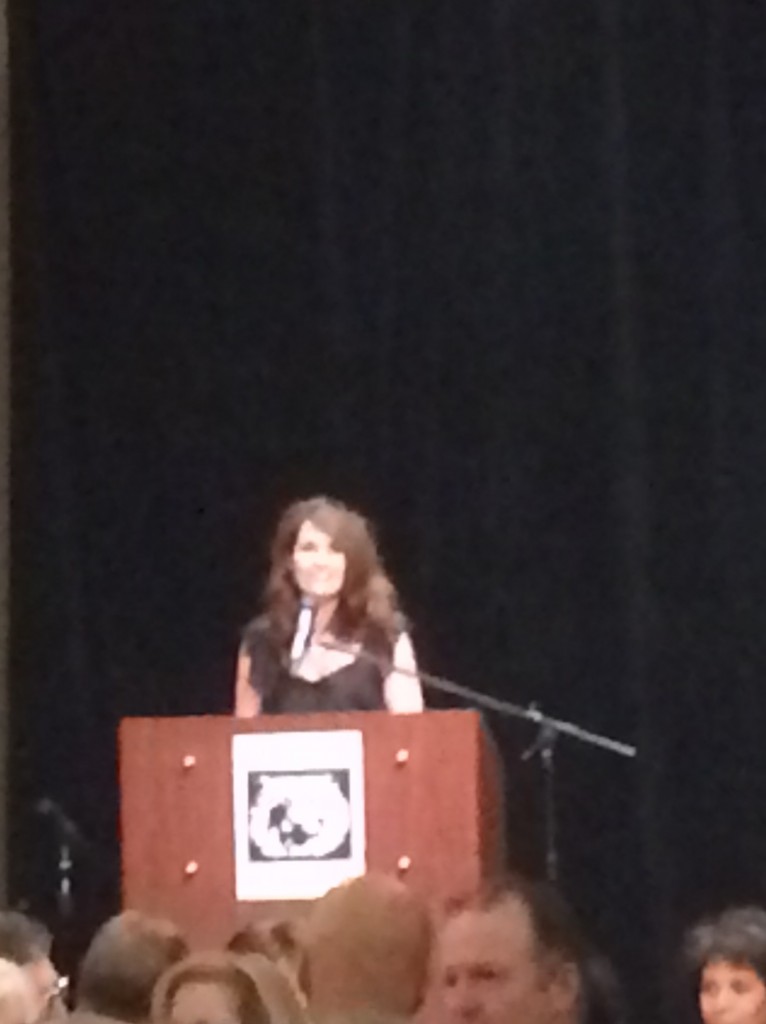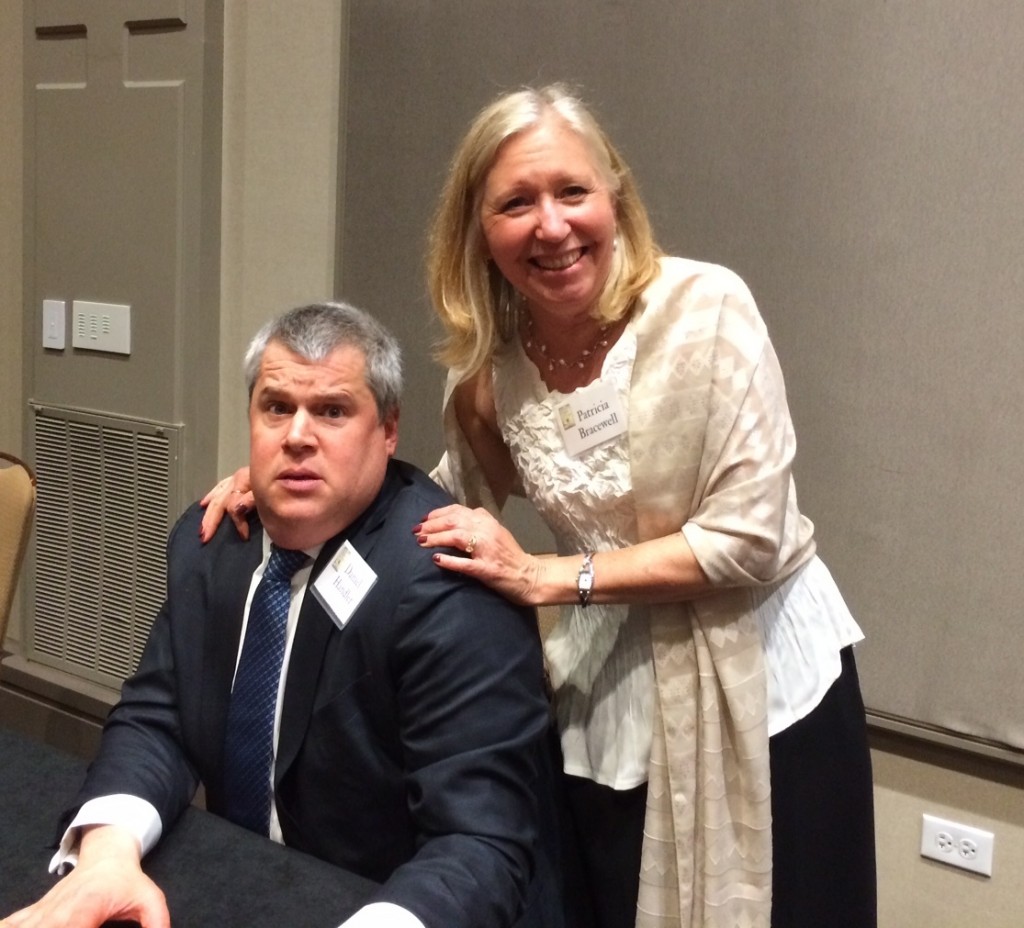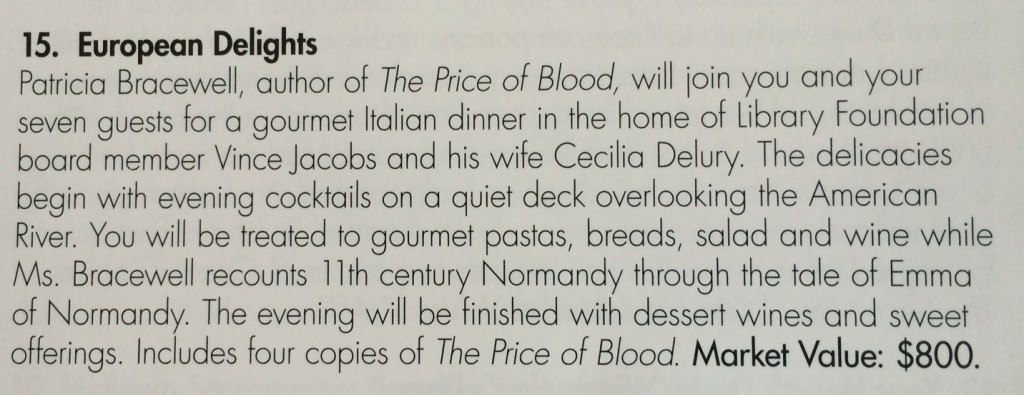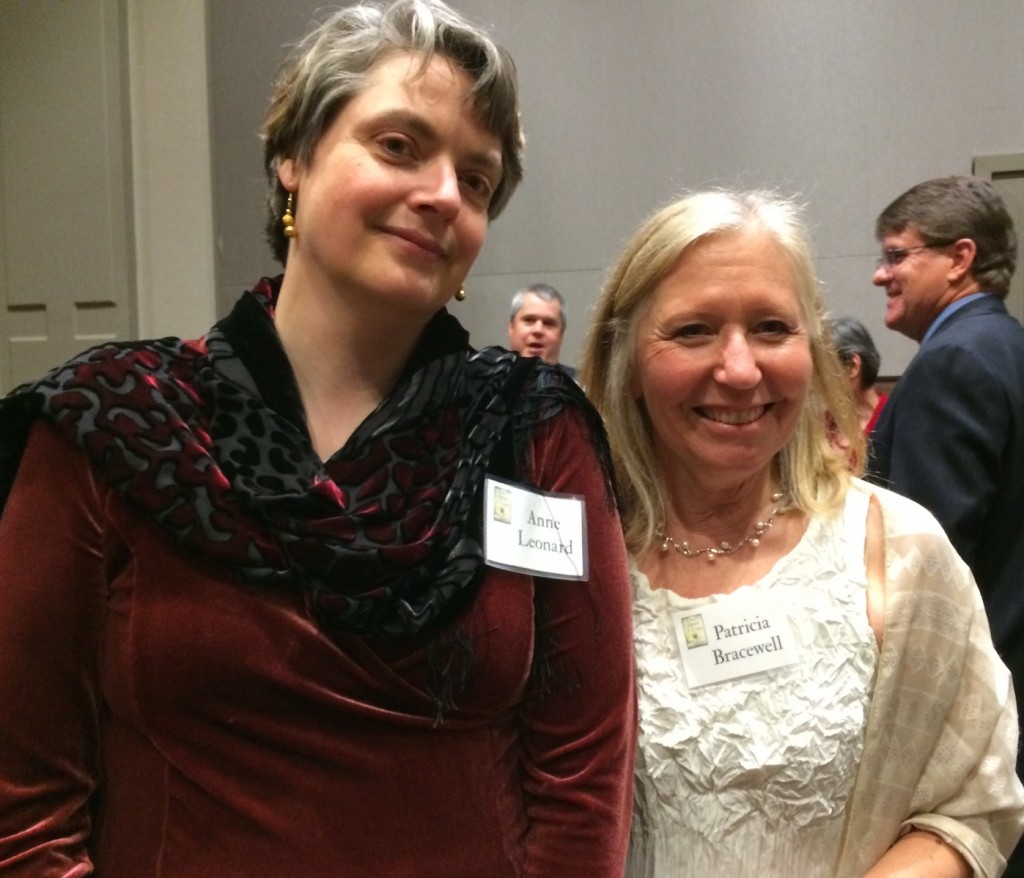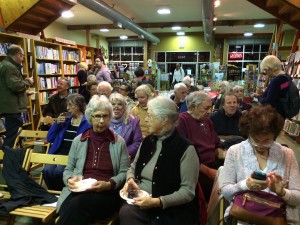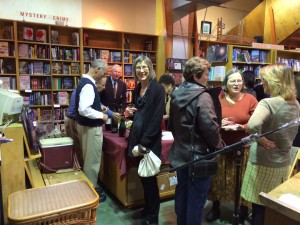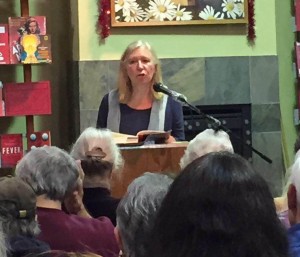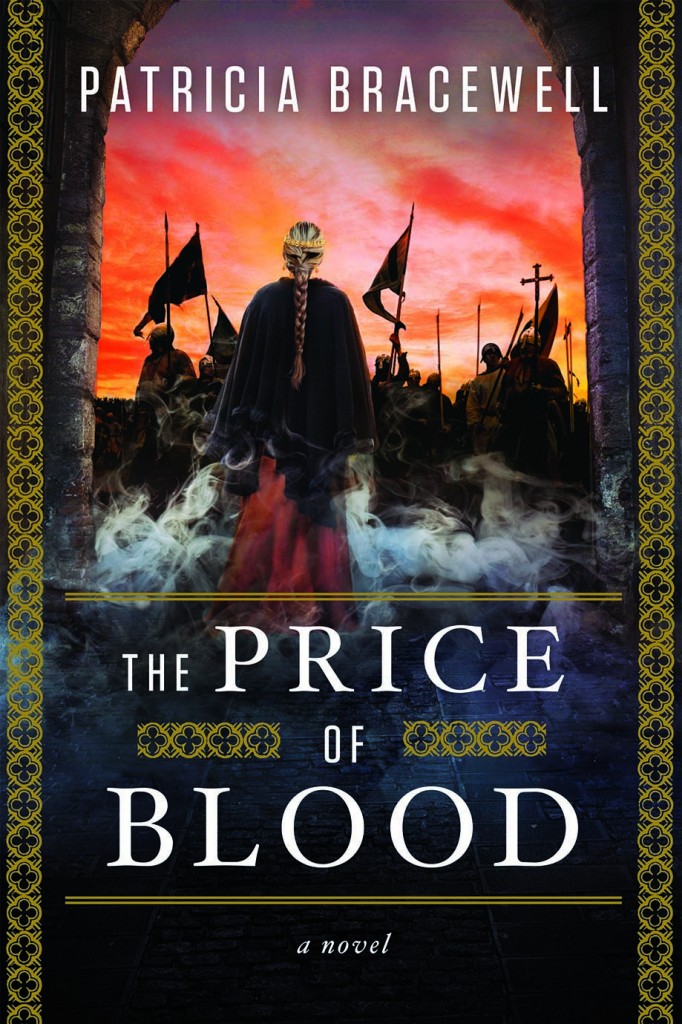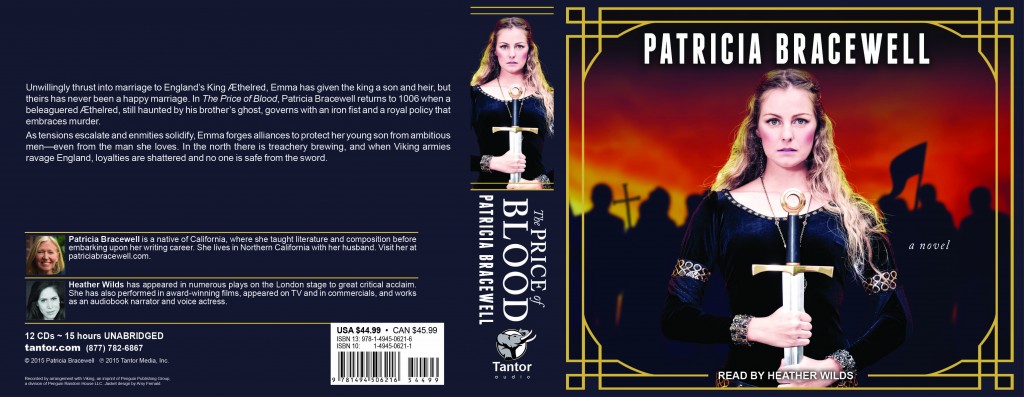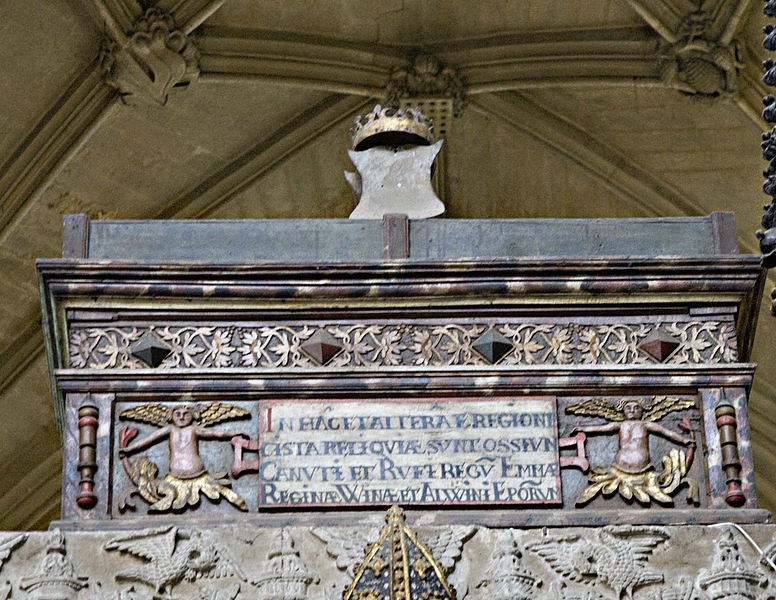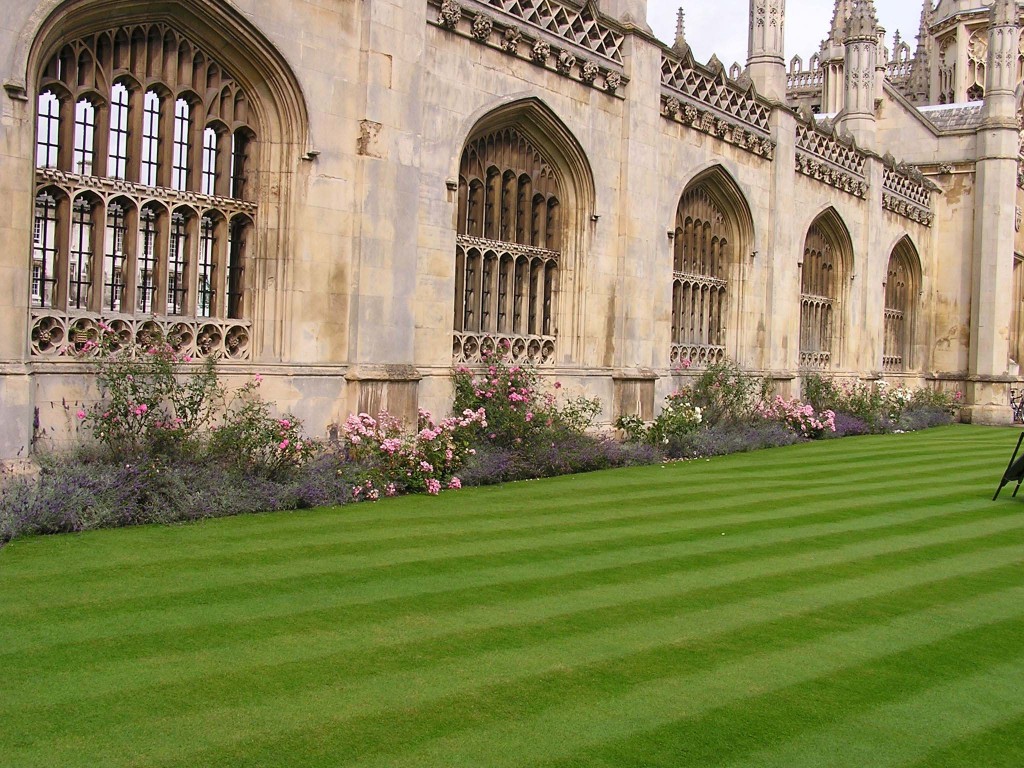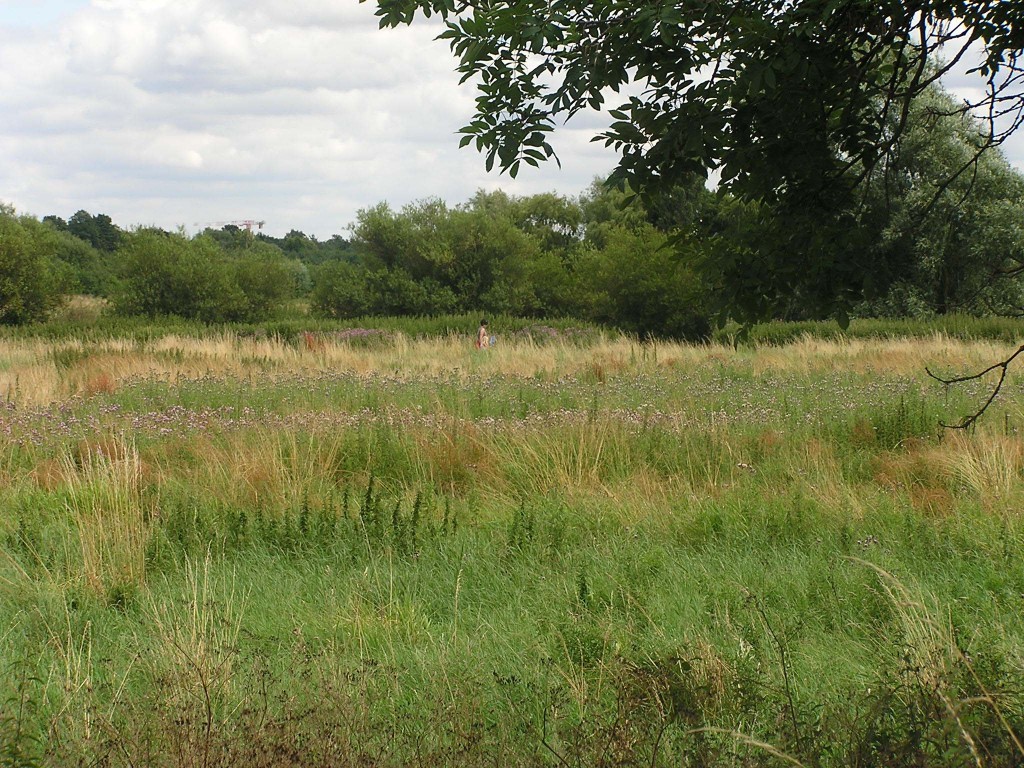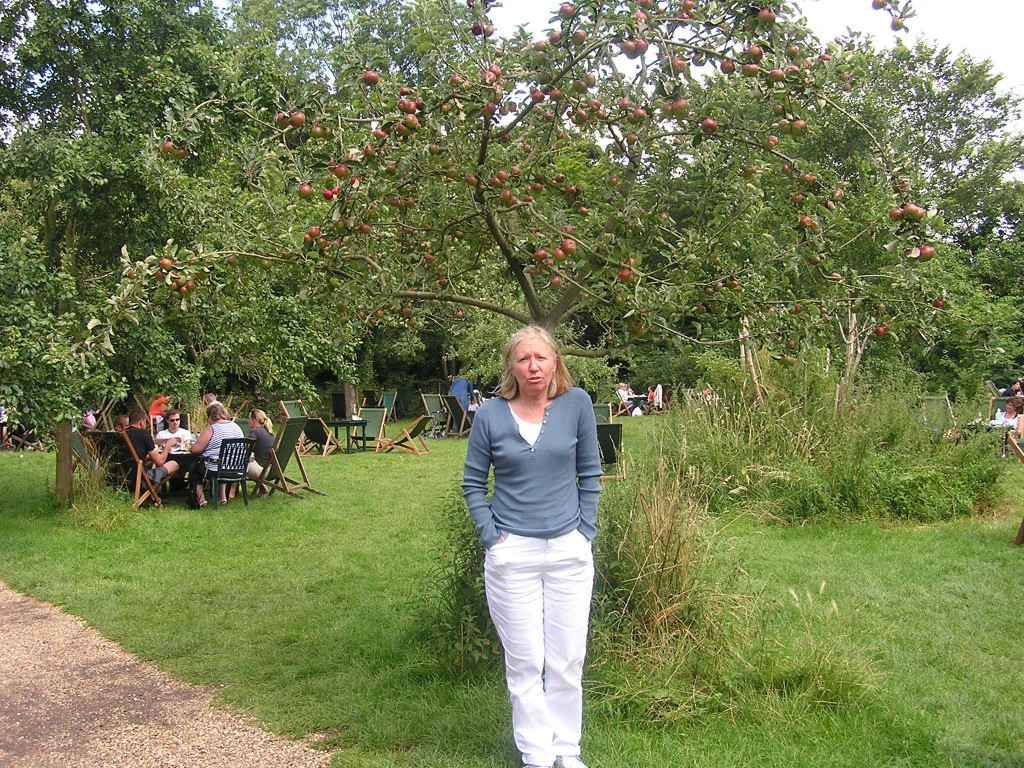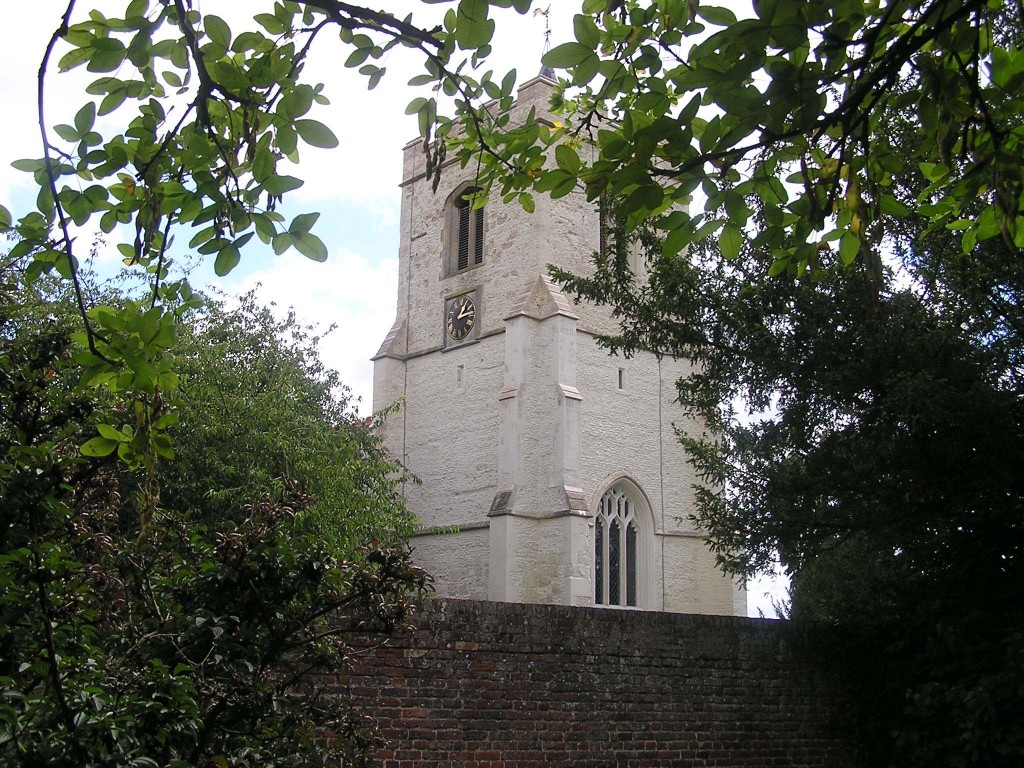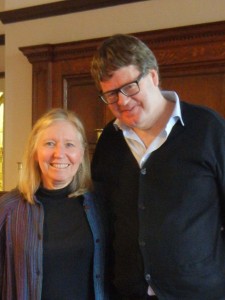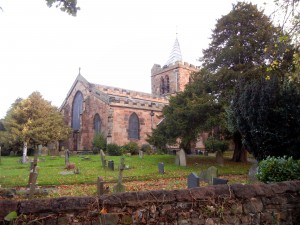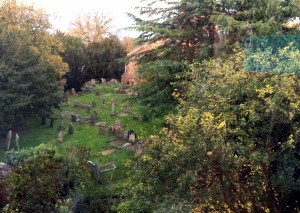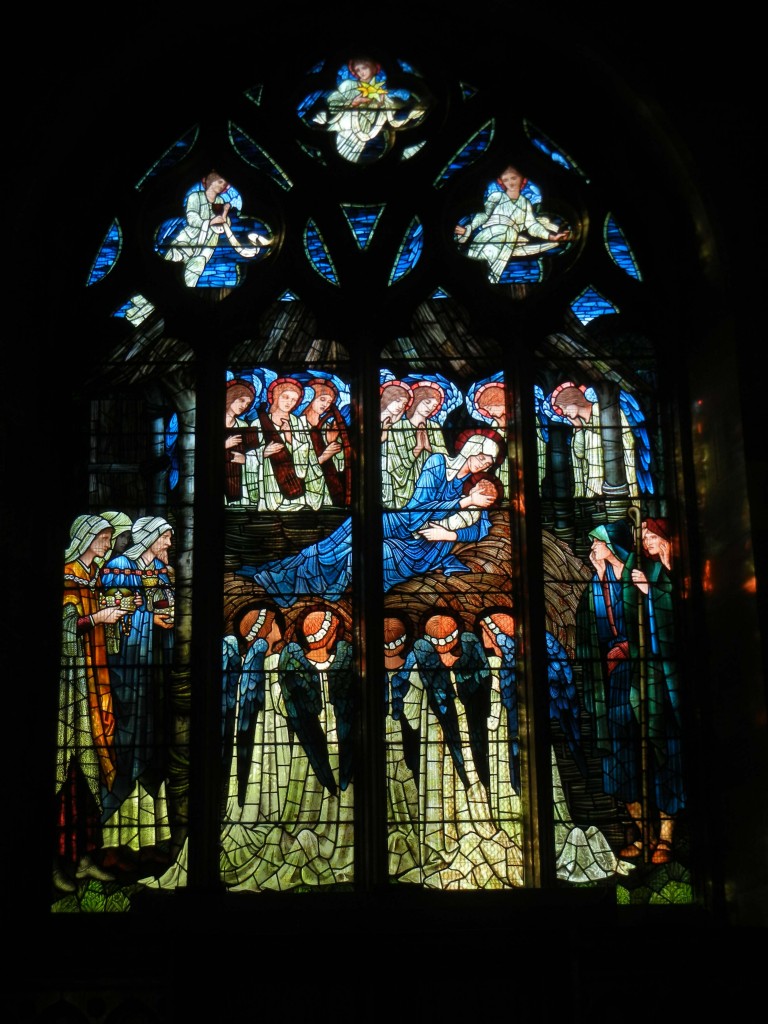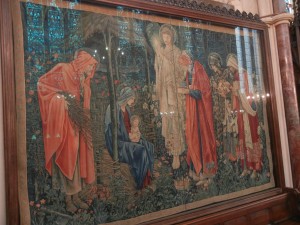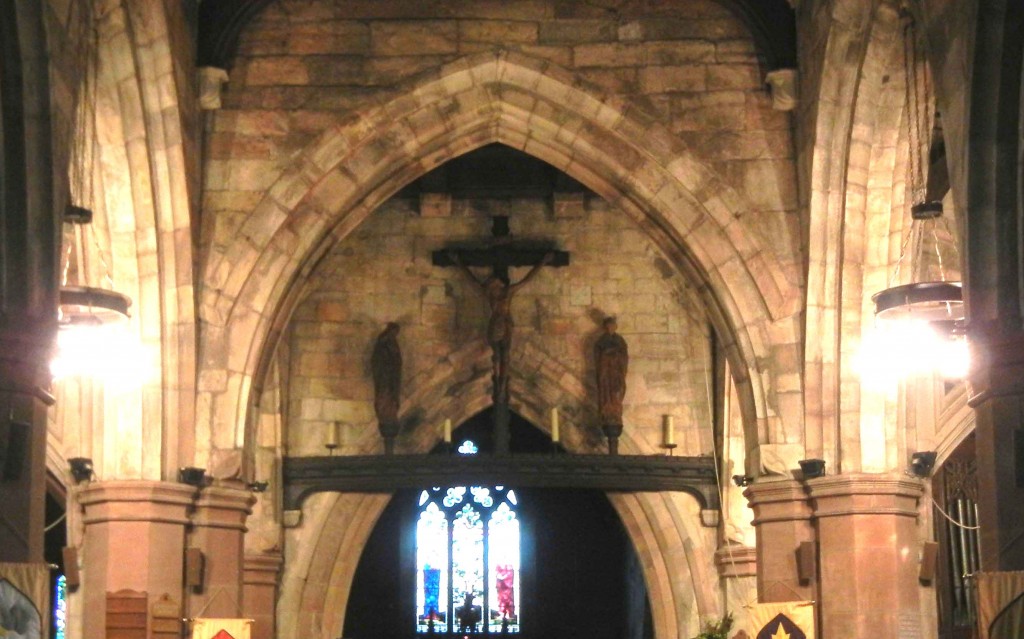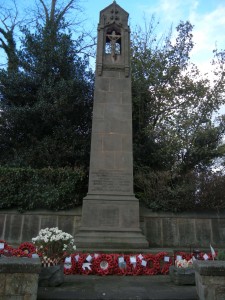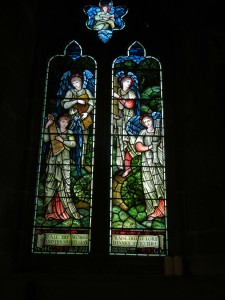The 2015 Historical Novel Society Conference took place in Denver this past weekend, and I want to record a few memories before I surge back into the 11th century.
Writers’ conferences are all about connecting and engaging with other writers, about handshakes and hugs, so of course I began the conference by arming myself with a sword.
Actor, author, fight choreographer David Blixt conducted 2 sword fighting workshops on Friday. I attended the broadsword session, which began with a vigorous performance of the final scene in Macbeth.
Before my body I throw my warlike shield. Lay on, Macduff,
And damned be him that first cries “Hold, enough!”
David and his fight partner Brandon were sweating when the scene was finished, and they had their audience in the palms of their hands.
“Write a sword scene like a sex scene,” David advised, “and a sex scene like a sword scene. It’s all about desire and denial, about character and personal stakes. Make the reader gasp.” Excellent advice, eloquently expressed.
In sparring with my assigned partner, the stage-trained Gillian Bagwell, I discovered that although I had a height advantage, she was taking larger steps as she moved forward, closing the distance (rather uncomfortably) between my body and the edge of her sword. Luckily we’re good friends. I would hate to spar with someone who held a grudge against me!
Lunch with Margaret George, Lesley Carroll and Gillian Bagwell was a gab fest about shoes, gowns, and writing historical fiction, not necessarily in that order.
The guest speaker at the opening night dinner was C.C. Humphreys, another actor and writer, whom I’d seen last at the San Diego conference in 2011 with, ironically, a sword in his hand. He was armed this time with words alone, words that alternately amused and inspired and captivated us. He was one of many, many writers there that I wanted to stuff in my suitcase and bring home with me.
My dinner partner that night was the remarkable Barbara Peters, owner of the Poisoned Pen Bookstore and Poisoned Pen Press in Phoenix. What Barbara doesn’t know about publishing isn’t worth knowing. She’s read about a zillion novels (and remembers them all) and has met as many novelists. She is a marvelous raconteur. There were no table-wide conversations simply because it was absolutely impossible, in a room filled with over 400 people, to hear anyone but the person beside you. Chris Cevasco had his camera, though, and snapped away. Thank you, Chris!
The nitty gritty business took place on Saturday, with numerous panels to choose from interspersed with quiet time for chance meetings in the lobbies or bookstore: writers, bloggers, readers – all of us a bit star struck when the chance came to talk to an author we admire. (My tongue always sticks to the roof of my mouth whenever I get within 3 feet of Diana Gabaldon.)
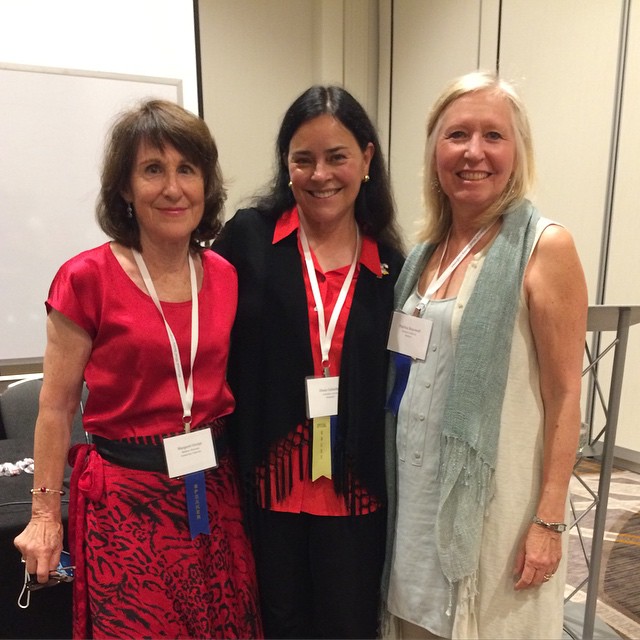
Withe two of the most brilliant & generous women of my acquaintance – Margaret George & Diana Gabaldon.
Hopeful newby writers waited nervously for their appointments to pitch to an agent or editor (that was me back in 2009), and were often seen walking several feet off the ground afterwards.
A panel on The Gender Divide with C.W. Gortner, C.C. Humphreys, Stephanie Dray, David Blixt and Vicky Alvear Shecter had me wanting to jump up and join their conversation.
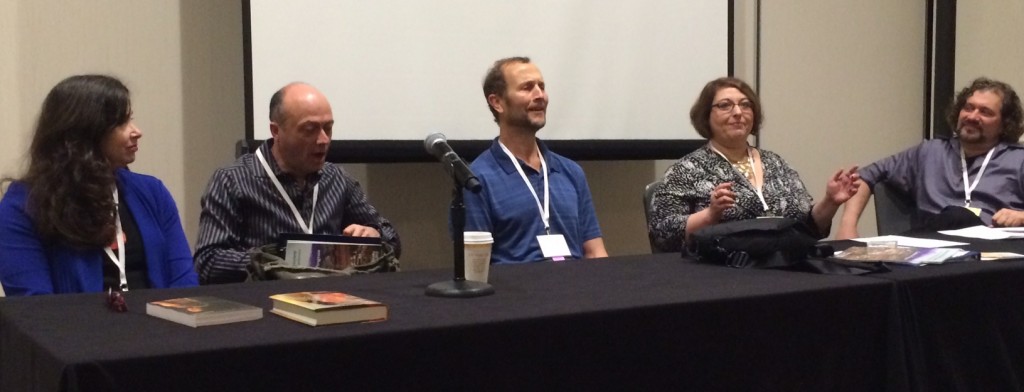
Vickey Alvear Shecter, C. W. Gortner, C. C. Humphreys, Stephanie Dray & David Blixt on The Gender Divide
C.C. Humphreys’ time trip to Elizabethan London was absolutely delightful and filled with tidbits about the Tudor world that he’s discovered in his research. Next up was a session on Midwifery with Sam Thomas, Lisa Yarde, Kim Rendfeld and Judith Starkston, moderated by Diana Gabaldon (who knows a little something about this topic as well). Bottom line: be glad you didn’t give birth any time before 1950, and especially in the 13th century b.c. There was this practice, you see, that involved swinging a ewe….
Our lunchtime speaker was YA novelist Karen Cushman whose Newbery Award winning novel Catherine, Called Birdy I’d read and loved a decade ago. What a thrill to discover, in a brief, post-luncheon conversation, that she is one of Emma’s fans. Our heroines, I think, have many of the same qualities.
My own panel, Making It Relevant & Making It Real: Writing Historical Fiction That Speaks to 21st Century Readers, went smoothly. How could it not when our moderator was Gillian Bagwell and the panelists with me were best selling authors C.W. Gortner and Margaret George?
I hope we were informative and helpful, as well as entertaining. We had an SRO audience of attentive listeners, and I saw a great deal of nodding as the three of us spoke to the topic at hand.
If anyone is wondering, we’d been planning this panel for months, giving it a great deal of thought as we came up with questions and answers that we felt would be enlightening to our listeners.
This was followed by a 2-hour book-signing event.
The book signing was followed by a banquet, an awards ceremony, the costume show and the traditional Saturday Night Sex Scene Readings. The ever-charming Diana Gabaldon regaled us, too, with a brief talk about options, tv shows, the rise of histfic, and Sam Heughen. (I had to list Diana at the end there so I could include an image of Sam as Jamie Fraser, just because.)
Last, but not least, the belle of the conference was my friend, critique partner and room-mate for the weekend, Gillian Bagwell. She scripted and emceed the Costume Show and, believe me, she suffered for the sake of beauty. That wig! Here she is, front and back. She rustled when she walked.
Next year’s conference will be in Oxford, UK. Start Planning Now.
